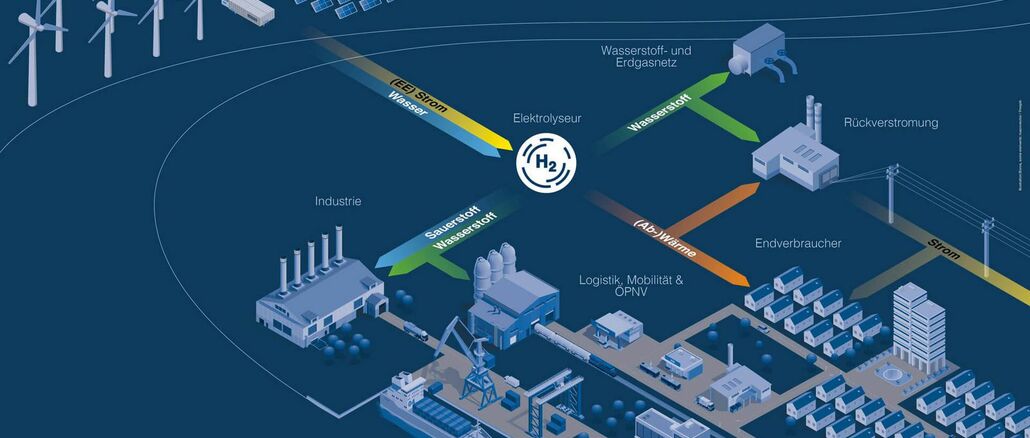
The operation of the first direct reduction plant using “green” hydrogen is an important milestone on thyssenkrupp Steel’s transformation path.
HydrOxy Walsum, Steag’s hydrogen project in Duisburg, North Rhine-Westphalia, is taking shape: Based on a positive feasibility study for a water electrolysis plant with an output of up to 520 megawatts, jointly prepared by project partners Steag and thyssenkrupp Steel, a memorandum of understanding has now been concluded on the supply of hydrogen and oxygen to the thyssenkrupp Steel site in Duisburg from the neighboring Steag site in Duisburg-Walsum.
thyssenkrupp Steel wants to use the hydrogen to generate significant CO2 savings in pig iron production in the future. “Our goal is for thyssenkrupp Steel to be climate neutral by 2045. As an interim step, we are already aiming to significantly reduce our emissions by 30 percent by 2030,” announces Dr. Marie Jaroni, Head of Decarbonization at thyssenkrupp Steel. Steag’s planned water electrolysis plant in Walsum would make an important contribution to achieving these ambitious goals. The oxygen that is automatically produced as a by-product in synthetic hydrogen production will also be used as a process gas in steel production.

© Thyssenkrupp Steel
Green hydrogen from near-site electrolysis
The basis for the project planning of a water electrolysis plant is a previous feasibility study on the supply of green hydrogen which thyssenkrupp Steel had prepared together with thyssenkrupp Nucera and Steag. It examined various hydrogen supply scenarios, taking into account different political and financial conditions. For the scenario assessed as the most robust, a water electrolysis plant with an installed capacity of up to 520 MW at the Walsum site, the investment decision should be made by 2023 at the latest.
Steag guarantees that the hydrogen produced in Walsum is “green”, i.e. climate-neutral: “The water electrolysis is operated entirely with electricity from renewable sources. In this respect, there are no CO2 emissions for hydrogen production. This means that the steel produced using our hydrogen is also climate-neutral, i.e. ‘green’, across the entire value chain,” promises Dr. Ralf Schiele, who is responsible for the Market and Technology divisions on Steag’s Executive Board.
Foundation of the transformation strategy
The use of climate-neutral hydrogen marks an important milestone on the way to climate-neutral steel production. For thyssenkrupp Steel this means replacing the coal-based blast furnace process with direct reduction plants in which the iron ores are reduced using hydrogen rather than coal. A downstream meltdown unit powered by green electricity then produces a climate-friendly electric pig iron comparable to conventional pig iron, which can be further processed in the same form in the subsequent steelmaking process to produce high-quality flat steels.
The start of possible hydrogen supply to thyssenkrupp Steel is planned for 2025. “Then we will start up the first of four planned direct reduction plants on the thyssenkrupp Steel site in Duisburg. With its help, pig iron will then no longer be produced in a blast furnace using coke, but with virtually zero emissions using hydrogen,” says Jaroni, describing the use of the green hydrogen produced by Steag in Duisburg-Walsum.



